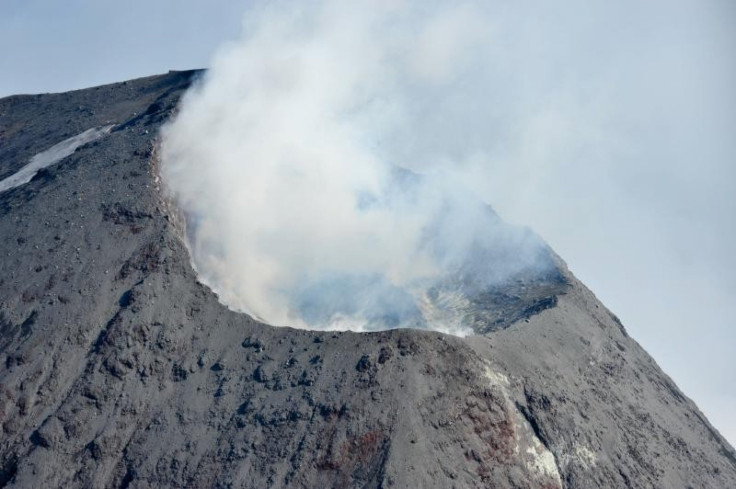Alaska's Cleveland Volcano Explodes Saturday Morning: Alaska Volcano Observatory

Alaska's Cleveland Volcano -- aka Mount Cleveland when in a more sedate mood -- began erupting Saturday at 5 a.m. AKDT (9 a.m. EDT), according to the Alaska Volcano Observatory, or AVO.
The Cleveland Volcano is in a comparatively remote area of the Aleutian Islands, about 940 miles southwest of Anchorage, the Associated Press reported.
Here is the full text of an AVO information statement about the event issued 6:22 p.m. AKDT (10:22 p.m. EDT):
"Cleveland Volcano
"52°49'20" N 169°56'42" W, Summit Elevation 5676 ft (1730 m)
"Current Volcano Alert Level: WATCH
"Current Aviation Color Code: ORANGE
"The current eruption of Cleveland Volcano, which began with an explosion this morning at 5:00 AM AKDT (13:00 UTC), has transitioned into a continuous low-level eruption. The activity is characterized by long duration airwave signals measured on the nearby Okmok seismic network, 120 km (80 mi) to the northeast. Larger discrete explosions occurred at roughly 5:00 AM, 9:17 AM, and 11:44 AM AKDT (13:00, 17:17, and 1944 UTC). Satellite and webcam data suggest continuous low-level emissions of gas, steam, and minor amounts of ash over the past several hours with a faint plume extending eastward below 15,000 ft. Satellite data also show highly elevated surface temperatures at the summit.
"Sudden explosions of blocks and ash are possible with little or no warning. Ash clouds, if produced, could exceed 20,000 feet above sea level. If a large ash-producing event occurs, nearby seismic, infrasound, or volcanic lightning networks should alert AVO staff quickly. However, for some events, a delay of several hours is possible. Cleveland Volcano does not have a local seismic network and is monitored using only distant seismic and infrasound instruments and satellite data.
"AVO will continue to monitor the volcano and issue additional information as available."
AVO is a joint program of the U.S. Geological Survey, the Geophysical Institute of the University of Alaska Fairbanks and the State of Alaska Division of Geological and Geophysical Surveys.
© Copyright IBTimes 2025. All rights reserved.





















